This is the hottest drinking trend of 2018—but is it any good?
These canned wines are no different than what's in a bottle
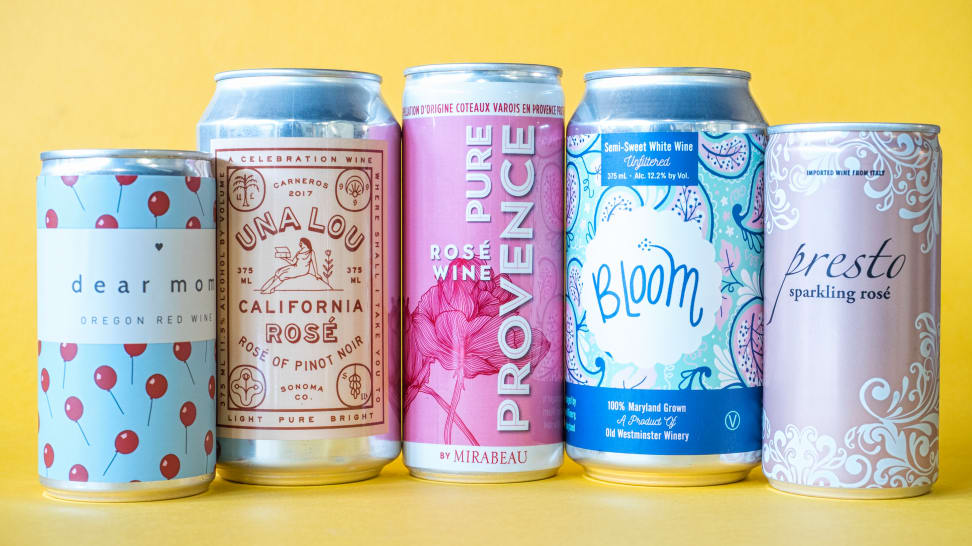 Credit:
Reviewed / Jackson Ruckar
Credit:
Reviewed / Jackson Ruckar
Recommendations are independently chosen by Reviewed's editors. Purchases made through the links below may earn us and our publishing partners a commission.
Yes, canned wine is really a thing now, and we need to talk about it. It’s no longer just one or two wineries trying to stir up some noise. Cans are popping up everywhere, and both big producers and tiny boutique wineries alike have become part of this growing trend. So now that summer is finally here, it’s the perfect time to take a closer look.
While there are plenty of reasons you might thumb your nose at drinking wine out of a can, this new packaging craze can be great for beach parties, barbeques, outdoor concerts, camping trips or anytime you don’t want the hassle of glass bottles, corkscrews and finding the right glassware.
So, here at Reviewed we took on the difficult task of seeking out some of the best canned wines to research the question you’re already asking: Is canned wine any good?
Of course it’s not an easy question to answer, but if you’re curious like we were, keep reading.
But first, where did this trend come from?
One of the earliest iterations of wine in a can came from California’s Francis Ford Coppola Winery when it launched a sparkling wine in a can called the Sofia Blanc de Blanc Mini in 2003. But it wasn’t until a decade later when Union Wine Co. in Oregon debuted its Underwood Pinot Noir in a can (along with an ambitious social media campaign), when this current craze ignited.
While cans only make up a tiny 0.2 percent of the entire wine market, Nielsen reported a 125 percent growth in the category between 2014 to 2016. For this year, the global data analytics company reports an additional 59.5 percent growth in sales compared to 2017. Just two years ago, canned wine was a $14.5. million industry. Today? It’s $28 million. (Our USA Today colleagues reported on the start of the trend two years ago and this year rounded up some of the latest releases.)
"Canned wine is on fire," says Terry Lozoff, vice president for marketing of Lila Wines. "Our canned wine is up 100 percent this year."
Why put wine in a can?
Drew Baker, owner of Old Westminster Winery in Maryland, says his natural wine company just released their third production of canned wines and can’t keep up with the demand. “From portion size to mobility to price point,” he says the canned wines align with their vision to make wine more accessible.
Think about it, cans can easily plop in your cooler or backpack and you don’t have to worry about a bottle breaking, making them the perfect portable potent potables for summertime fun: at the beach, while camping, or just hanging out at the pool.
Just one small warning, while many cans come in smaller sizes such as 185ml, 250ml, the common 375ml can (what most soda and beer are packaged in) is the equivalent to a half a bottle of wine, so sip (or share) responsibly. Rumor has it, soda can savers work with canned wine, too.
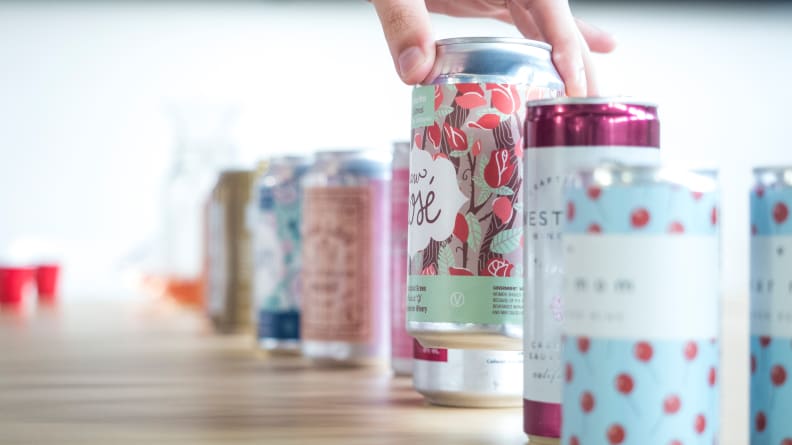
Cans come in all sorts of sizes, just be aware that if you open the standard-size can, its the equivalent of half a bottle of wine.
But is canned wine any good?
Yes and no. Just like bottled wines and beers, there are all sorts of canned wine. There’s no particular reason that wine produced for a can would be any different than a wine produced for a bottle. In fact, Union Wine Co. produces the same wine and packages it both formats.
“The wines that we’re canning are the same standard from farming practices all the way through to how we’re bottling our other wines,” Baker says about his Old Westminster wines.
But he also points out the wines his family produces are meant to be drunk right away, so they prefer to package wines that are bright and juicy.
"The quality of canned wine is definitely improving," Lozoff of Lila Wines says, explaining it's no longer a novelty. So, to survive in the market, he says, wineries must keep improving their wines. "The quality of the product has got to be better because people's expectations are getting higher. The same sort of thing happened with craft beer."
So, we tasted some canned wines for ourselves.
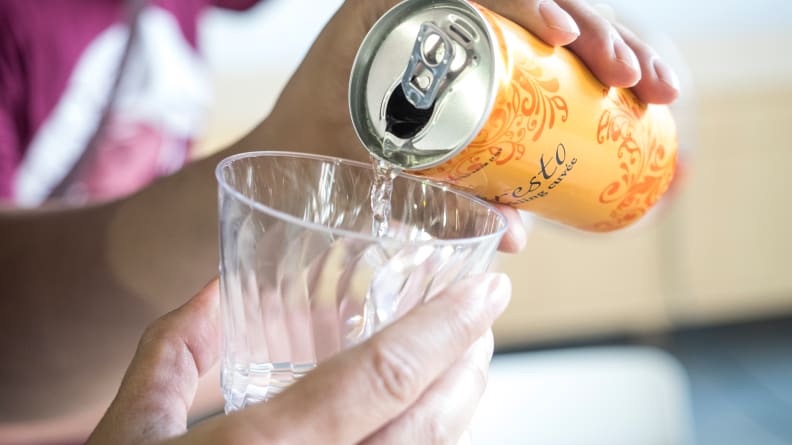
On a recent Friday afternoon I set up a very unscientific blind tasting: I pitted one of my favorite bottles of rosé against one of the more popular canned rosés and asked my colleagues if they could guess which came from a can. While the results weren’t a landslide, a solid majority guessed the canned wine came from the bottle.
We also tasted a lineup of 13 different cans from eight different producers (Union Wine Co., Old Westminster Winery, Scribe Winery, Mirabeau, Presto, West Side Wine Co., Dear Mom and Ramona). A majority of the cans came from well-curated wine shops here in the Boston area on the advice of their managers or sales clerks. We also picked up a few at our local Whole Foods. About 50 percent of the wines we purchased were rosé, with a couple of whites and reds to round out the spectrum. While Ramona, is considered a wine cooler (because it mixes wine with other juices), there’s been enough buzz in the wine world that it warranted a taste (after all, we wanted to be thorough on your behalf!).
Here are our results:
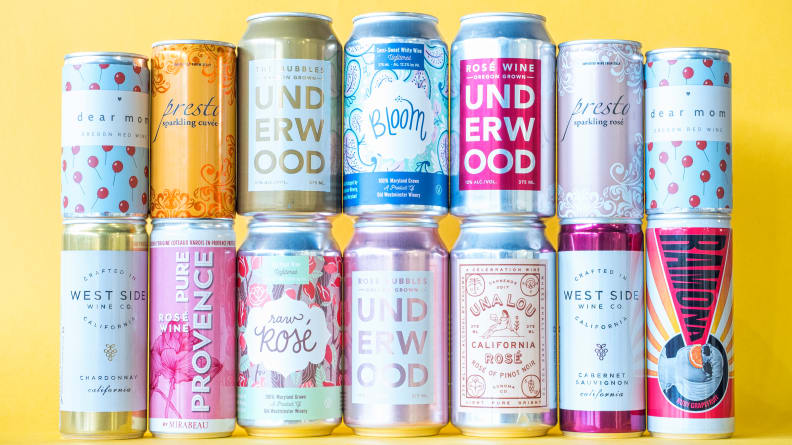
We tasted 13 different cans from eight producers to help you choose the right canned wine for your summer parties.
There wasn’t a clear favorite among the cans we tried, but the sweeter and sparkling wines dominated. Perhaps, that’s because you expect some carbonation and sweetness out of a can.
But since we spent some time being choosy about what we tasted, we’d feel comfortable saying any of these could liven up your day at the beach or Fourth of July barbeque. Just note that prices listed here reflect what we paid, and may be different online or where you find them in your local area.
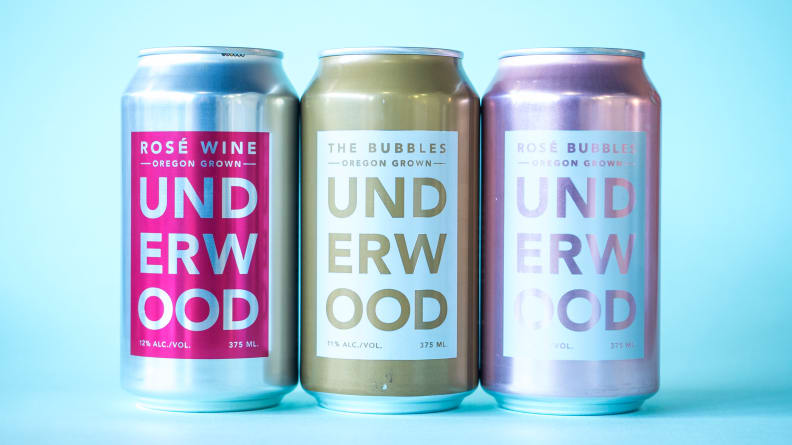
Great for unpretentiousness: Union Wine Co.’s Underwood ($7 / 375ml can): This is the wine that boosted the current trend and both the Rosé Bubbles and Rosé were among our unofficial tasting panel’s favorites (the rosé was part of our bottle vs. can tasting). We also tried The Bubbles. All three easy-to-drink dry wines burst with flavor and live up to the company’s unpretentious #pinkiesdown motto.
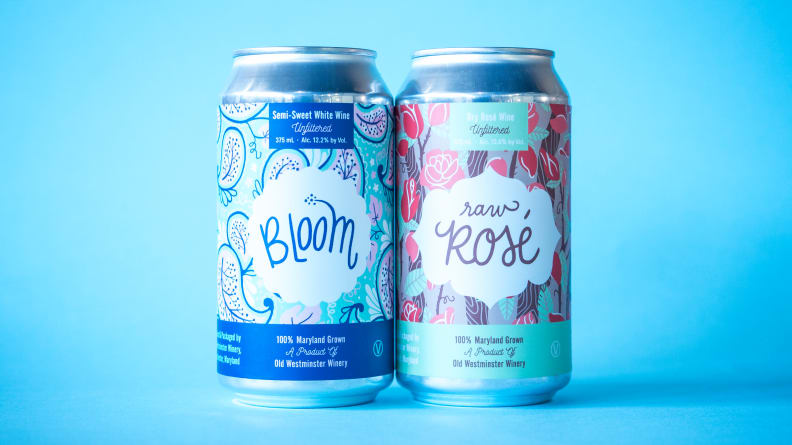
Great for natural wine lovers: Old Westminster Winery ($9.95 / 375ml can ) This small Maryland winery is making a big name for itself in the canned wine market. While production is much lower than wineries like Union Wine Co., Old Westminster distributes to several states along the eastern seaboard and in California. We tried the Raw Rosé and The Bloom Semi-Sweet White Wine, which was another favorite among our group. It combines Chardonnay, Vidal Blanc and Muscat grapes. Just be a bit wary, if you don't like sweeter wines, this may not be the wine for you. During the tasting, one of my colleagues remarked, “the cans look like a Mother’s Day card!” While maybe not the reason to drink a wine, it’s certainly a fun bonus.
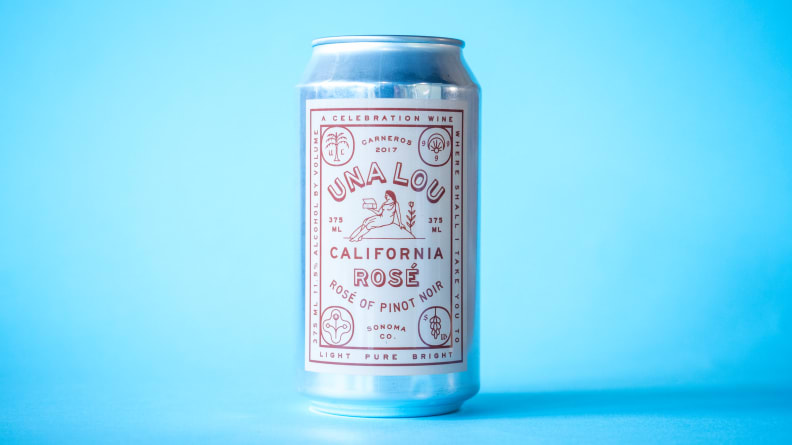
Great for a California vibe: Scribe Winery’s Una Lou ($13 / 375ml can) If Scribe sounds familiar, it’s because it's become a favorite among millennials seeking what the San Francisco Chronicle called a “minimalistic, rural, and folksy” aesthetic in Sonoma County, California. The winery’s Una Lou Rosé of Pinot Noir touts strawberry and grapefruit flavors with some rustic edges expressing that laid-back non-fussy California vibe.
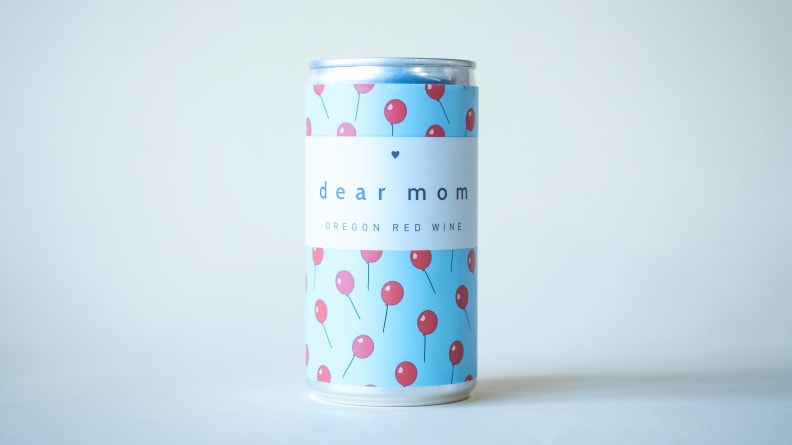
Great for chilly summer nights: Dear Mom ($4.48/ 187ml can) I was really excited about finding this Oregon winery’s red wine (made from Syrah and Viognier, a classic Rhone-style grape pairing). It’s whimsical light blue label dotted with red balloons puts you at ease before inhaling an aroma of dark cherries and lavender. Once you take a sip, however, this medium-bodied wine just seems a bit out of place coming from a can. Pour it in a glass and give it some air, and the wine opens up nicely. On a chilly summer evening, this might be the can to slowly sip to warm you up.
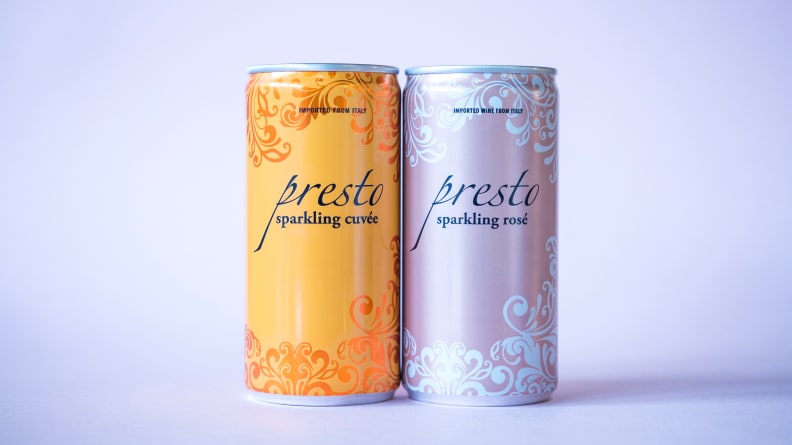
Great for bubbles: Presto ($2.99 / 185ml can ) We tired both the Sparkling Cuvée and the Sparkling Rosé. As the least expensive wine on our list, these bright and crisp Italian sparkling wines (think Prosecco) sold at Whole Foods have a peppy yet elegant fizz and a touch of sweetness. The sparkling rosé even more so. I appreciated the smaller 185ml can size, too, which feels most appropriate for a sparkling pre-dinner sip on a beach-house porch.
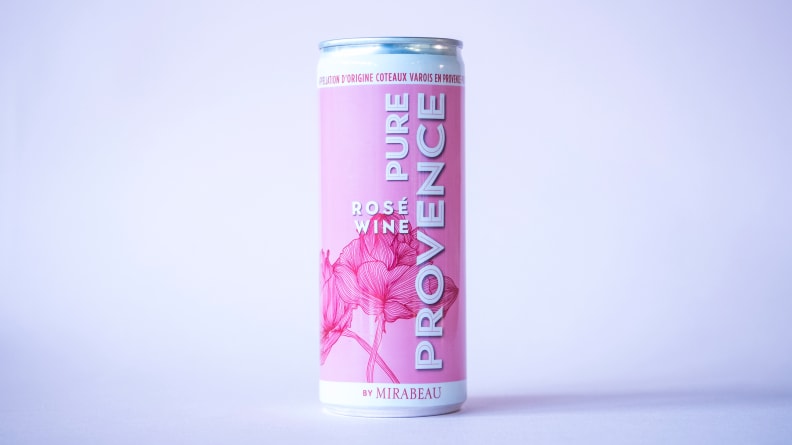
Great to pretend you're on the coast of France: Pure Provence by Mirabeau ($5.49 / 250ml can) Another Whole Foods find, this “canette” of rosé lives up to its name. This was a nice surprise in our lineup, as it tasted very typical of a Provincial rosé: a dry wine reminiscent of the famous seaside sun-drenched region it hails from.
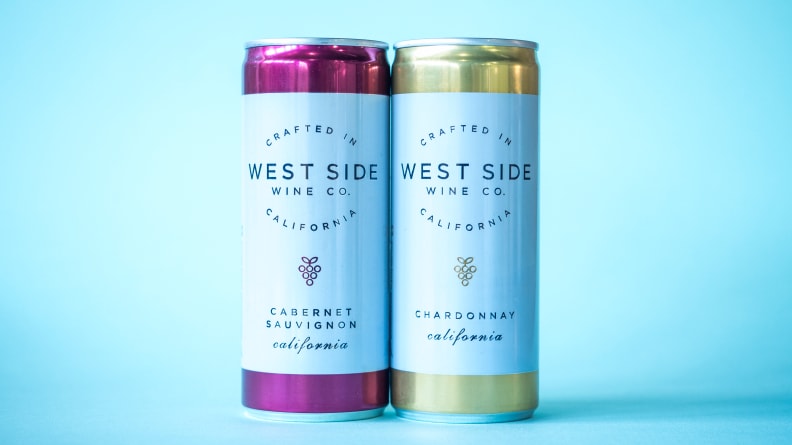
Great for the traditionalists: West Side Wine Co. ($4.49 / 250ml can) We tried both the white (a Chardonnay) and a red (Cabernet). Both were exactly what you’d expect: classic tropical flavors from the Chardonnay but without all the oak, and ripe red fruit on the Cabernet. Nice for a for a backyard soirée where you want to provide more traditional beverage offerings.
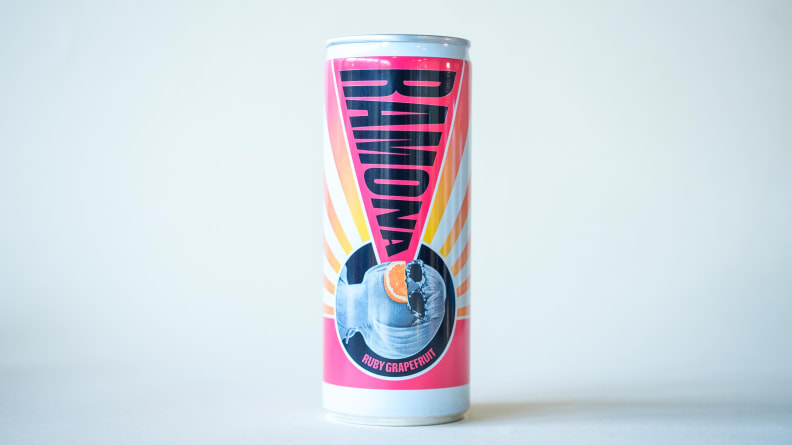
Great for just wanting to have fun: Ramona ($5 / 250 ml can) A mix of wine, grapefruit juice and a bit of spritz, this is a modern-day wine cooler, but it was introduced a few years ago from a respected New York city sommelier. It’s sweet and fun, with a heavy grapefruit punch. What’s nice about these 250ml cans, they’re only 7 percent alcohol by volume versus the average wine, which is often 12 to 14 percent.
Prices are accurate at the time of publication, but may change over time.

